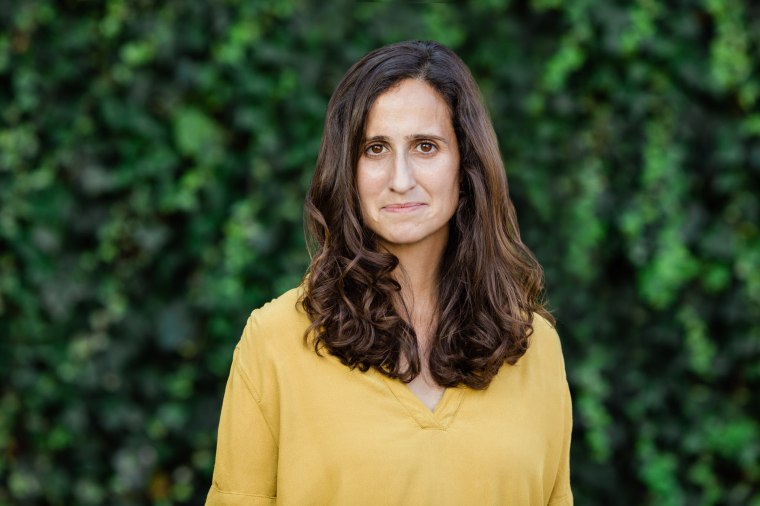The mom who lives in the $2 million house, the mom who is raising her kids in poverty — and the women in socioeconomic classes in between — all agree on what a healthy diet for their children should be.
Sociologist Priya Fielding-Singh talked to them at length, embedding herself with families of different incomes for months and observing the choices that went into feeding their kids.
What she found was eye opening. An unhealthy diet is the No. 1 contributor to mortality in the U.S., and there is a significant gap in diet quality between richer and poorer Americans — known as nutritional inequality — but the reasons why are more complex than people realize, she said.
“I can’t overstate just how incorrect this misconception is that low-income parents don’t know what a healthy diet is,” Fielding-Singh told TODAY.
“No mother told me that she thought soda and fast food were healthy choices for her children, and almost every mother agreed that fruits and vegetables were the kinds of foods that should be at the center of their children’s dietary intake.”
But despite these shared values, the circumstances in which mothers raised their children profoundly impacted the way they thought about junk food, home cooking and what to buy in a grocery store.
The notion of “food deserts” doesn’t matter as much as once thought, Fielding-Singh writes in her new book, “How the Other Half Eats: The Untold Story of Food and Inequality in America.”
Where higher-income moms have more food rules and are proud to say “no” to their kids’ pleas for candy and chips, lower-income women have compelling reasons to say “yes.”

Then, there are complicated attitudes toward Whole Foods, kale and organic snacks.
Fielding-Singh, an assistant professor of family and consumer studies at the University of Utah, focused on women, who are still most likely in charge of food in a household.
She shared some of her findings with TODAY:
Food deserts are not the problem
Fielding-Singh: The term food desert became really popular in early 2010s, mostly because of Michelle Obama’s “Let’s Move” campaign to end childhood obesity.
It said people who live in low-income communities have poor diet quality because they face important barriers to accessing healthy food. They have to shop at gas stations or convenience stores because they don’t have access to supermarkets.
But when you put the food desert argument to the test, it just really isn’t borne out by the data. Most people in this country shop at supermarkets, whether they live in a food desert or not — 90% of supermarket trips are made by car.
When a supermarket opens in a food desert, people just go from shopping farther away to this new closer supermarket. But it doesn’t actually change what they’re buying, so if they were purchasing frozen pizzas and chips at the farther away supermarket, they’ll be purchasing the same things at the closer supermarket.
It makes a lot of sense: Our food choices are not just about what we have access to, it’s about the meanings that food holds to us.
Why some moms say ‘yes’ to junk food
Fielding-Singh: For mothers who are raising their children in poverty, being able to make ends meet depends on having to constantly say “no” and that’s extremely difficult because kids ask for stuff all the time and because feeling like a good parent is in part about being able to give kids what they want.
For those moms, junk food was one of the few things they had at their disposal to be able to say “yes” to. So even though they didn’t want their children eating those foods, within the context of such intense scarcity, saying “yes” really made a lot of sense. It was so symbolically powerful. They showed their kids that they heard them and loved them, and showed themselves they were competent caregivers.
There are more food rules in more affluent households
Fielding-Singh: It’s kind of amazing how the exact same action of saying “no” was distressing for lower- income mothers, but it was a source of pride for higher-income mothers.
They parented in this world of “yes,” where you can give your kids private school and family vacations, so saying “no” to food wasn’t as emotionally distressing. It was much easier for higher-income parents to act on those values and beliefs that they shared with low-income parents about healthy foods because they had so many other things that they could say “yes” to.
It helped them feel like they were good caregivers, like they were making sure that their kids’ diets were healthy and that their kids were learning self-control around food.
Processed, prepared food buys time and satiety
Fielding-Singh: While it may be true that home-cooked meals can be healthier and less expensive, the guidance to cook at home seems really out of touch with parents’ lived realities and what it’s like to work a full time job and care for your children.
One really simple reason a mom may opt to serve pizza rather than a home-cooked meal is that those convenience foods are enjoyable and tasty, and at the end of a hard day of work when you’ve stood on your feet for 12 hours already, the idea of going and standing over a stove for another hour just doesn’t compete with the alternative option of picking something up.
Low-income moms often prioritized purchasing food that they knew their kids would eat. If they tried to make a vegetable stir fry, there was a chance that their kids wouldn’t eat it, but if they ordered a pizza, they could guarantee that their children would eat that food and go to bed that night satiated.
The ability to navigate kids’ pickiness is really a luxury that is enabled by financial resources.
Kale vs. collard greens: How food status is shaped by race and class
Fielding-Singh: There are very different views about these greens even though they’re actually pretty similar. Some of that comes from the fact that our societal understanding of what makes a food healthy is in part due to the food’s nutritional value, but also who it has historically been consumed by.
Kale has been lauded as this nutritional superfood. It has been associated as something that upper-middle class, thin white women consume.
Whereas collard greens, which are really nutritionally comparable, have not received the same recognition. They’re a central ingredient in soul food, which is the cuisine associated with Black culture in the U.S. and the cuisine that I would say has been largely derided as unhealthy.
The halo around Whole Foods
Fielding-Singh: Whole Foods was the supermarket that came up the most in my conversations with mothers. It’s more than a grocery store — it’s really a signifier of a certain diet, lifestyle and social class.
For higher-income mothers who shopped at Whole Foods, there’s often this underlying assumption that the products that they were purchasing were better and healthier. Certainly, there’s something to that: Whole Foods has a wide array of organic fruits and vegetables; they have on offer certain products that are not available elsewhere.
But Whole Foods also sells processed foods that are not necessarily nutritionally better than foods you could buy at lower-end supermarkets. But for mothers who were buying their kids organic cheddar squares at Whole Foods rather than Cheez-Its at Lucky, there was a sense that they were feeding their kids something that was better.
Emotional attachments to food transcend health
Fielding-Singh: A lot of our food choices are, in the end, less about health or nutrition and more about the other roles that food serves in our lives. It brings us joy, connection, pleasure and nostalgia. So for anyone to think that it’s just about health and nutrition misses the broader context within which we make these choices.
This interview was condensed and edited for clarity.

